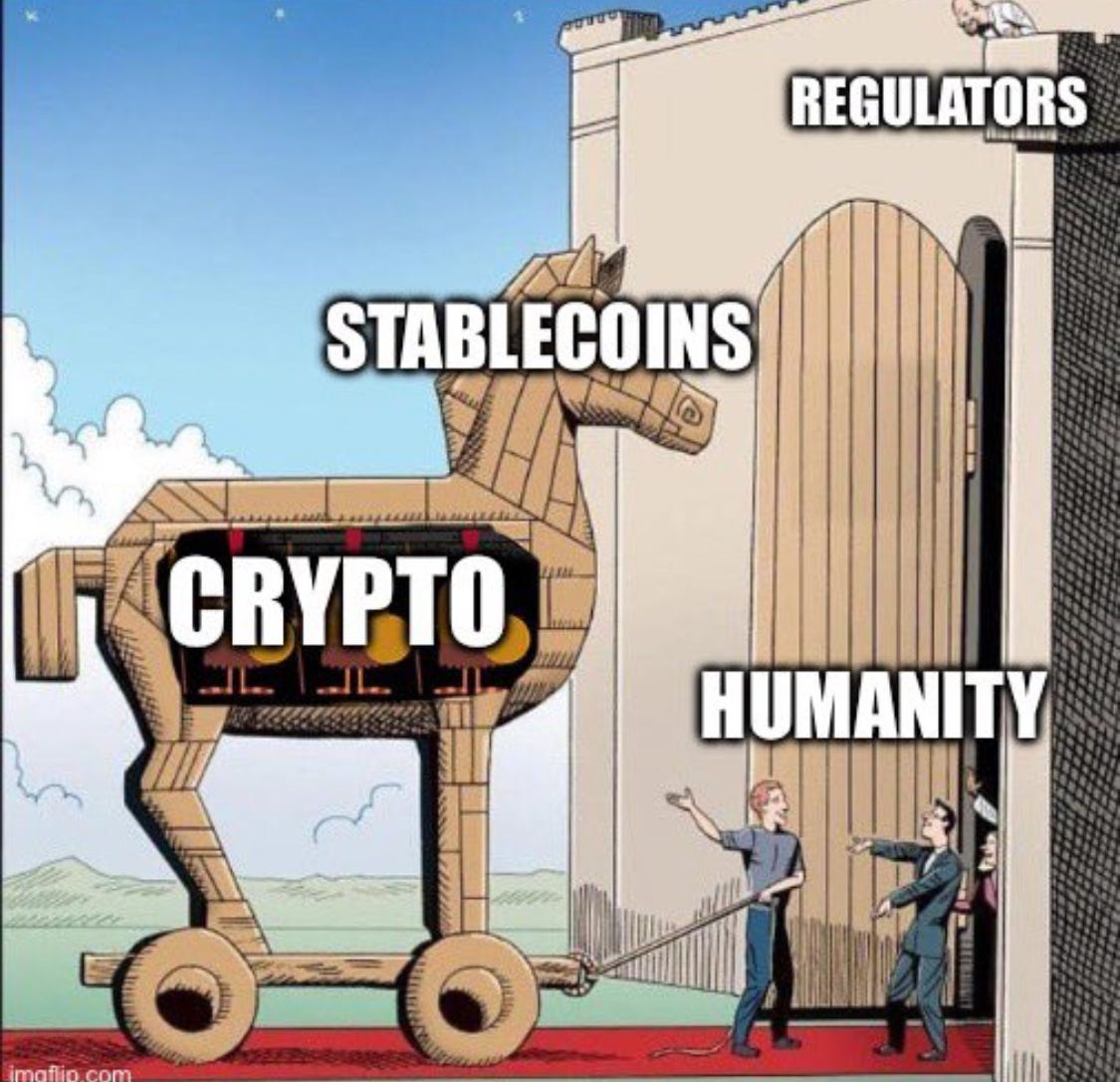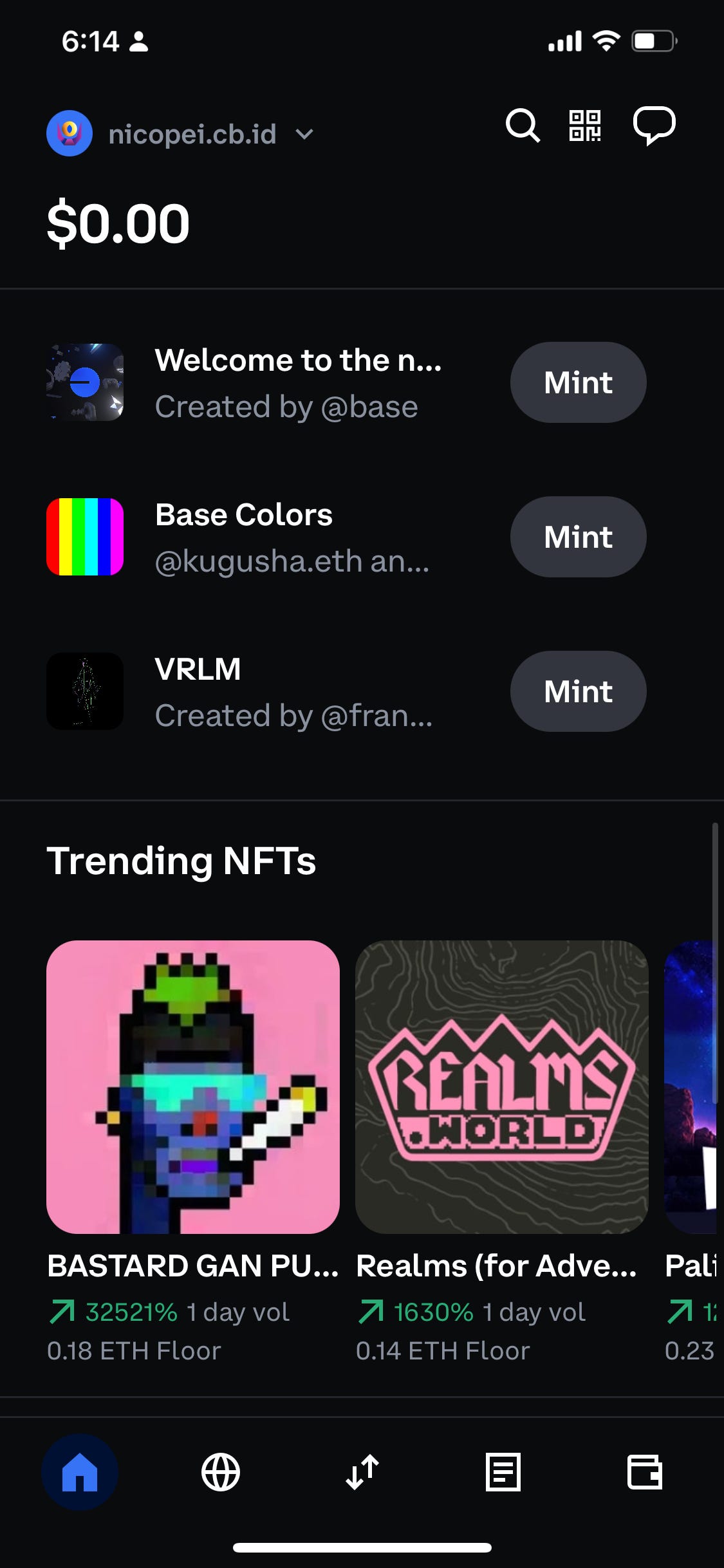Why Stripe acquired Bridge for 1.1 Billion
To my surprise, many mainstream media reporters and investors reached out to learn more about this deal. I thought it would be more efficient for everyone to directly share my thoughts here.
Disclaimer: These are my personal views only. My company is a potential customer of Bridge or Paxos. DYOR. NFA
Is 1.1B a fair price?
Considering that so many L2s raised money at 2B+ valuation in 2022, the implied premium of a takeover acquisition, the potentials of stablecoin payment vertical, and the team’s caliber, this is a great price. However, a great price (based on supply-side) != a worthy buy (based on actual utility). The rest of this article discusses whether it’s a worthy buy.
Today is October 21 2024 and Stripe just announced the acquisition of Bridge, an on / off ramp API solution, for 1.1 Billion dollar. On October 9th, after seeing Stripe relaunched their crypto payment product and hearing about the looming acquisition from trusted source, I quickly drafted my takes on the future of crypto payment. To my surprise, many mainstream media reporters and investors reached out to learn more about this topic. I thought it would be more efficient for everyone to directly share my thoughts here instead of having 10 conversations and let out multiple sources of second-hand information. So here you go — direct, unfiltered report from the trenches.
Table of Content
900M-1.1B is a lot money. What is potentially down the road for crypto payment?
What’s special about bridge? Is it yet another on / off-ramp solution?
What other companies can potentially be important in crypto payment in the next 3-5 years?
The followings are five most frequently asked questions from the past week, and my answers.
1. 900M-1.1B is a lot money. What is potentially down the road for crypto payment?
At a high level, crypto creates value in two ways:
1. make cash equivalent more like cash;
2. make transacting cheaper and with less overhead.
The second point is frequently talked about, but let me be more precise here. For C2B, most domestic consumer payments cost 1.5-3.5%, while international payments can cost up to 5.5%. If consumers pay with crypto, transacting cost will include three parts: 1. gas cost (sub-cent level on optimistic L2s), 2. off-ramp cost (10-25 bps, quoted by bridge), and 3. ACH cost for sending fiat to merchant ($0.2-$1 per transfer but can aggregate multiple transactions under one ACH transfer). Thus, consumer payment cost can be lowered from [150, 350] bps to [15,50] bps, a 65-95% decrease. If that doesn’t sound like a lot to you, it’s equivalent to merchants are currently paying 3 to 20 times transaction fee on traditional payment rail compare to crypto payment solutions. For businesses with relatively thin margins, that’s huge.
Adoption is a challenging puzzle when building a two-sided network between consumers and merchants. Incentives and smoothness of product are the most important. I’m curious to see how this unfolds. On the consumer side, I expect a product will emerge that taps into token markets, leveraging the speculative and mimetic nature of humans as crypto always do, and grow crypto payment to a broader user base. Studying successful growth stories in GameFi (eg. Stepn, Axie Infinity) teaches you how aligning incentives can efficiently drive organic consumer growth. The key difference with payments is that network growth and consumer behavior shifts will actually accrue long-term value, instead of being an one-off pump and dump scheme.
Another interesting tail-wind is actually how difficult and expensive it is to off-ramp for retails, which makes spending crypto a lot more attractive. Currently crypto spenders use Bitrefill, which charges extremely high fees (~5-7%) but still generates ~200 million volume annually.
“make cash equivalent more like cash” is a top-down approach of adoption. Currently, people deposit at banks for three objectives:
1/ easy use as payment;
2/ earn interests on spare cash;
3/ keep the money safe from risky exposure.
In the existing banking / payment / security system, you can’t achieve all three easily without depositing at banks. Even owning the safest assets like t-bills means you can’t conveniently spend that money on your morning coffee. However, Silicon Valley Bank’s fateful collapse in March 2023 and the looming Commercial Real Estate bubble burst makes 3/ seems shakier than ever. This lack of better options justify banks’ hefty spread on deposits, which makes bank deposits one of the lowest sharpe ratio but most widely used financial vehicle in the world.
“Make cash equivalent more like cash” is a top-down approach of adoption. Currently, people deposit at banks for three objectives: 1/ easy use as payment; 2/ earn interests on spare cash; 3/ keep the money safe from risky exposure. In the existing banking / payment / security system, you can’t achieve all three easily without depositing at banks. Even owning safe assets like t-bills means you can’t conveniently spend that money on your morning coffee. Plus, Silicon Valley Bank’s fateful collapse in March 2023 makes 3/ seems shakier than ever. This lack of options justify banks’ hefty spread on deposits, which makes bank deposits one of the lowest sharpe ratio but most used financial vehicle in the world.
Over-collateralized Debt Positions allow you to get “cash” (aka. stablecoins) while holding any sufficiently-liquid and value-stable assets (ps. if it works for BTC and ETH, it will work for a lot of other assets). Only fast, atomic, transparent, permissionless protocols can efficiently create cdp and “make cash equivalent more like cash”. If it’s possible to directly earn yield from owning safe assets while having access to liquidity from those assets, that could be an alternative to achieving all three objectives above without depositing at banks. In terms of whether that’s minting a new stablecoin or borrowing stablecoins from others, it’s yet to be defined. I’m hoping for the prior.
M^0 is doing something interesting in this area, and their co-founder Luca’s blog is a gem to learn more about this field.
2. What’s special about bridge? Is it yet another on / off-ramp solution?
Paxos is Bridge’s closest competitor. Bridge mainly does three things.
1. on / off-ramp, forex api (bullish, and it’s what this acquisition is about);
2. stablecoin exchange api (bearish);
3. Institutional stablecoin issuance (depends on a few key players’ appetite for adoption);
On / off-ramp solutions come in different shapes and forms. In general, there are several factors:
User-profile: Retail-facing (eg. Ramp Network) vs business-facing (eg. Bridge) vs exchange-facing;
Interface: Front-end (eg. Moonpay, Ramp Network) vs. via API (eg. Bridge, Paxos) vs. back-end settlement layer;
Fiat Channel: Debit / Credit card (Moonpay) vs ACH / Wire (eg. CEX, Bridge);
Interoperability: without forex support vs with forex support;
While building payment solutions, we’ve recognized the importance of a business-facing, ACH / wire transfer solution through an API in the payment supply chain—precisely what Bridge provides. This is also a business with network effect: more volume leads to lower slippage and competitive pricing. The retail-facing, through cards and front-end space is a lot more saturated.
Meanwhile, the barrier of entry of this business is particularly high due to the Money Transmitter License (MTL) requirement. Bridge’s US C-corp has its MTL approved in 22 US states and a license “passports” to EU/EEA region. For regions that Bridge is not covering or compliant yet, alternative solutions exist such as Bitso for B2B payments in Latin America.
I’m bearish on Bridge’s stablecoin exchange api because so many decentralized exchanges (eg. Curve) can do the same and have much deeper liquidity. I don’t see an unique value prop here other than it’s a good add-on feature for Bridge’s customers from their other products.
For their institutional stablecoin issuance product, I always wonder what institutions would be interested in issuing their own stablecoin. FinTech companies? (Eg. Paypal USD and Paxos) Banks? (Eg. Stablecoin as Bank Deposit Receipt? ) Security Brokers? (Eg. Mint stablecoin by using securities / t-bills as collaterals?) They have to be open-minded players in financial services but not crypto-native enough to integrate existing stablecoins in-house. To put on my builder hat, I hope for a world with fewer types of stablecoins because fragmented stablecoin liquidity means less interoperability, more swaps, more fees, and ultimately worse user experience. Instead of more issuance of different stablecoins, we need products that make existing stablecoins more useful. However, if Bridge can actually get banks and brokers to issue their own stablecoins, it definitely will help push adoption forwards with the top-down approach.
3. Why don’t Stripe build it in-house?
Classic Innovator’s Dilemma situation. Genetically speaking, Stripe is an agile e-commerce payment company which has dominated the internet economy in the past 10 years. Their slogan is “Increasing the GDP of the Internet”.
Crypto is about making use of self-custodial money powered by cryptography and distributed systems. Its root is more research-focused rather than product-driven, with the speculative, mimetic, internet-culture side that’s even harder for an established company to navigate. The mindset and skillset are somewhat different, and it likely takes a different group to do it.
John Collison did a great interview with Matt Levine on Money Stuff Podcast last Friday, October 21 2024. They talked about how Stripe is gradually becoming the Investment banking for internet commerce through issuing micro-loans to e-commerce with their in-house ML models. He also mentioned how Stripe is attempting to take down pay walls with Link, a product that remembers customers’ credit card info across different websites. When talking about crypto, John mostly emphasized how bubbles aren’t always bad, citing the dot-com bubble as the dawn of the bourgeoning internet economy.
It sounds like they have many exciting things going on, and the priors definitely are more natural extensions of their main e-commerce payment businesses than stablecoin payments. They have a team that’s (somewhat conservatively) experimenting with stablecoins , but the company will not go allin on it. Historically, they have launched and sunset crypto payment solutions for multiple times.
In short, Stripe will be an important force to make stablecoin payment more visible and believable. However, I think it takes a more aggressive, crypto-native approach to tackle the elephants in room for crypto payments, and I won’t be surprised if Stripe doesn’t build it in-house but want to acquire them in the future.
4. Stripe is already using Paxos for their payment product. Why would they want to acquire Bridge?
Classic vertical integration situation. With the payment product launched last week, Stripe doesn’t want to keep paying fees to Paxos or keep replying on 3rd party off-ramp providers in the long-term.
Paxos is at a much later stage than Bridge. It was founded in 2012 and raised 300m at 2.4B valuation in 2021. It has many more product lines including Paxos Gold, native stablecoin, and its brokerage business. Most of Paxos’s other products are not of Stripe’s immediate interest.
Based on LinkedIn, many Bridge employees, including their co-founders Zach Abrams, are ex-brex or ex-stripe, which makes post-acquisition integration easier.
5. What other companies can potentially be important in crypto payment in the next 3-5 years?
Existing Companies (in no particular order):
Centralized Exchanges (Binance, Coinbase): Coinbase Wallet offers the smoothest passkey-based wallet experience. However, the root from the exchange business can also be a baggage. For example, when I login to Coinbase Wallet, my screen is filled with NFTs to mint and Memecoins to trade. The speculation-focused UI will definitely alienate a broader audience.
Coinbase Wallet is too much for normies.
A lot better.
Stablecoin Issuers (Tether, Circle): They are issuers of the current most widely-adopted stablecoins. Stablecoin issuance is such a lucrative, well-established business model so it’s unclear whether they will go above and beyond on payment. Tether made 700m more in profit than Blackrock last year, with only 120 employees compare to Blackrock’s 20,000 employees workforce. Their biggest threats are yield-bearing stablecoins competing their profits away. There has been many attempts of yield-bearing stablecoins in the past 5 years but USDC / USDT still pay no interest. Perhaps that’s what strong network effect looks like.
L1s (Etheream and Tron): It’s worth to mention that the current stablecoin landscape is ~50% on ethereum, ~35% on Tron, and ~15% for all other chains and L2s.
L2s: All competing for developers, applications, users, and volume. Unclear which ecosystem will eventually win.
Block: Owns SMB IRL payment merchant relationship with Square, has P2P payment users with Cash App, and is led by a bitcoin maxi founder CEO Jack Dorsey.
Payroll providers (ADP, Gusto, Intuit): Most consumer-spending originate from one of these providers. Retail on-ramp is the most expensive / messy part of the payment flow, and payroll could be a good channel for smooth and cheap on-ramping. They won’t be early adopters but will be very important in long-term.
New Companies (in no particular order):
(Thanks for makaing it to the end. Here’s the highest alpha section)
A cross-app, embedded wallet solution (eg. Capsule, Turnkey)
A company that figures out consumer-incentives for payment with crypto (can’t think of any. It likely also provide merchant-side payment solutions)
Merchant-side payment solutions (can’t think of any. the closest is Coinbase Commerce)
Normie-friendly passkey-based wallet with embedded browser (can’t think of any. the closest is Coinbase Wallet)
A consumer-side payment native app that is compatible with all future merchant-side payment solutions (yet to be defined)
Smooth, cheap, and in-app on-ramp solution (eg. Payy - the smoothest on-ramp I’ve ever used. It’s with apple pay, no fee, and no need to fill KYC form. However, they are probably losing a lot of money on this smooth on-ramp feature)
Crypto-native payroll providers (the closest is Utopia Labs, but they stopped working on this)
Big congrats to both Bridge and Stripe for closing this deal! This is definitely a step forward for the crypto payment space. I’m still bullish on self-custodial money.










Per 1.2: Not sure there will be much demand from large merchants as they are paying ~50bps for credit and ~10bps for debit https://blog.starpointllp.com/?p=6348
Add to that the (current) lack of rewards and purchase protection for consumers. That said, stablecoins do enable people without cards to transact which is a huge opportunity for PSPs like Stripe.